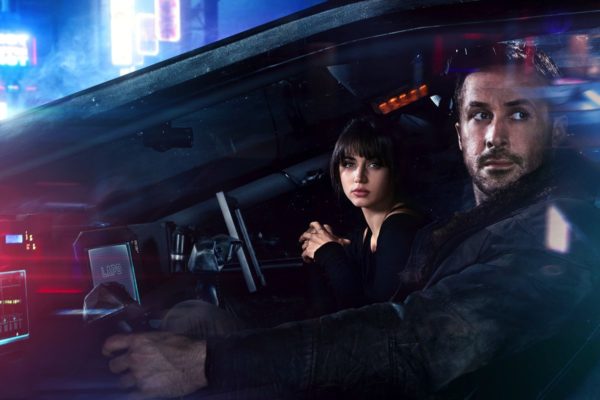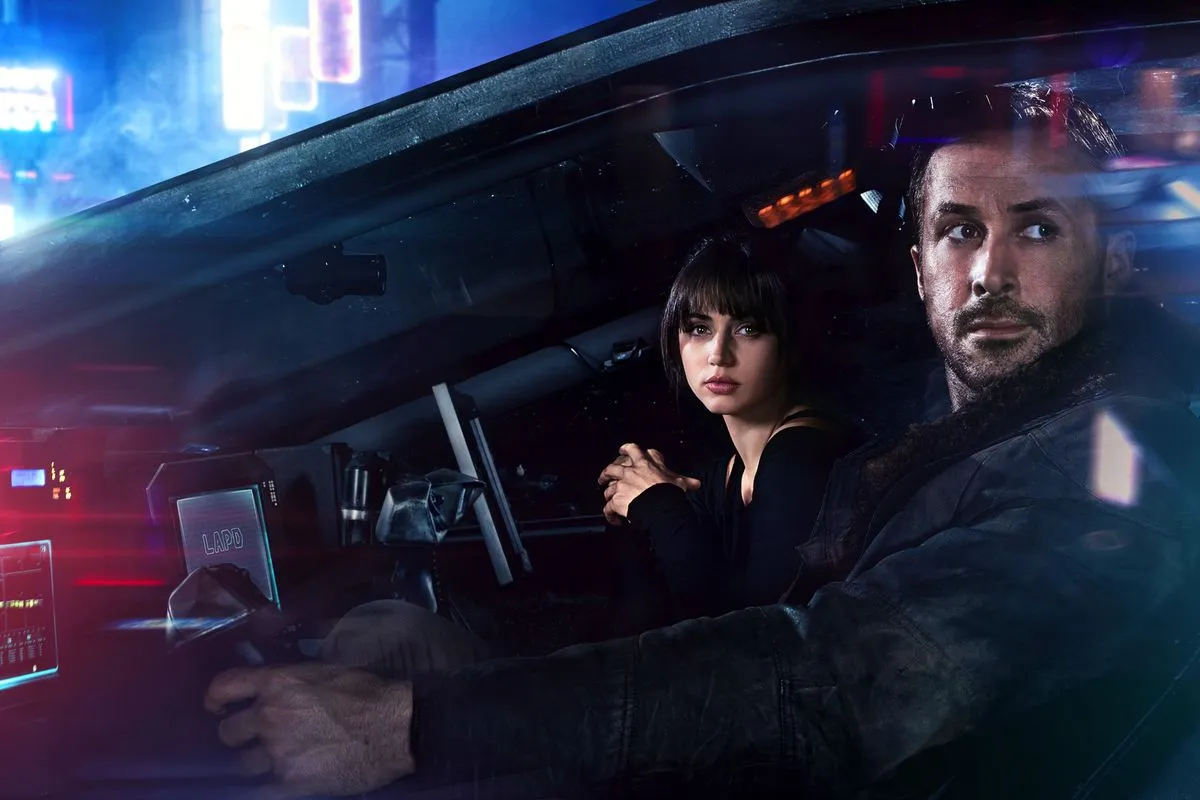
Welcome to “Movies In Conversation,” a new Screen Beat feature at The Stanford Daily. Two writers will watch the same movie and offer differing opinions on it in open dialogue. This week, we’ll be focusing on Denis Villeneuve’s sequel to Blade Runner, “Blade Runner 2049,” which our critics Noah Howard and Elaine Kim believe to be a visually stunning yet slow film that explores the boundaries of humanity and human relationships.
Warning: Major spoilers ahead.
Elaine Kim (EK): First impressions?
Noah Howard (NH): I thought it was absolutely amazing.
EK: I thought it was … good.
(both laugh)
EK: If you could summarize the movie in one line, what would it be?
NH: Umm … bioengineered cop looks for naturally born but bioengineered baby.
EK: That’s good. Let’s see… sexy dystopian cop wrestles with questions of humanity …
NH: In super futuristic LA.
EK: In super futuristic LA. So, now we can talk about the aesthetics of the film … What did you think about the visuals?
NH: Anyone who’s seen the trailer would know that it’s absolutely gorgeous. Or anyone who’s seen “Arrival” and “Sicario,” both of which were also directed by Denis Villeneuve. Most of the scenes deal with a single, universal color palette, but despite that, there’s still a lot of incredibly minute visual detail that largely defined the aesthetics of the first movie. There are the rich costumes and set designs, and of course the towering blue-gray buildings that made the first movie look so iconic.
EK: I agree. Every scene was almost like a painting. I also liked how he used light and shadow – very “Citizen Kane”-esque – revealing and hiding characters and their motivations through measured lighting. He definitely did a good job with world-building via consistent, action-comic-like imagery. It was glorious to see every shot of a new landscape or environment unfold. We shouldn’t, however, forget to mention character and acting – how was that?
NH: That’s a difficult question, considering that it’s nothing like the naturalistic style we’re used to. It’s very long and drawn out, often times intentionally robotic, which also takes after the first movie. When you’re trying to make a movie that questions what it means to be human, it makes sense to dehumanize the humans as much as possible.
EK: Right, there were a lot of stylized performances from Luv, played by Sylvia Hoeks, and the warden of the orphanage, which created very distinct characters that stuck in your head. But as far as Ryan Gosling, he didn’t exactly have a standout performance.
NH: I would argue that he was meant to be a blank-slate character that the audience could identify with. I hate going back to the first movie, but that’s very consistent with the first movie.
EK: I guess it does take a certain talent to become a blank-slate character. I was also very interested in how females were portrayed in the film. There seemed to have been a lot of technological progress in the setting but not a lot of social progress. Now this could be the kind of values we currently have that were projected onto the story, but the female bodies in the film were constantly sexualized and objectified. From prostitutes to cyber girlfriends, there was a lot of nudity for nudity’s sake.
NH: The movie certainly doesn’t pass the Bechdel test, there’s not much of a question about that. The female characters are either underdeveloped or exist to serve their male counterparts. That being said, I was impressed with how emotionally invested I became with the relationship between K (the main character played by Gosling) and his cyber girlfriend, Joi.
EK: Reminded me of the movie “Her,” too. That also makes us imagine what human relationships will look like once we have virtual humans, cloned humans and actual humans … That was a good dive into what future human relationships will look like. Anyway, [let’s talk about] pacing and editing, as this is one of the most important points that we’ll touch on.
NH: So the pacing is probably the biggest turnoff for most people, even though I still think it’s very good. It’s extremely slow, and in a world where our sci-fi movies are mostly about explosions and action and things happening constantly, that can be pretty off-putting. It’s extremely consistent with the pacing of the original movie, and in fact I think that’s its most impressive emulation, because I haven’t seen any movie paced similarly since, but if you’re used to large amounts of action or fast dialogue, than it’s pretty likely that this will take some getting used to. The best test is probably if you liked how the trailer was paced, compared to, say, the “Star Wars” trailer, then you’ll like how the movie is paced compared to “Star Wars.”
EK: Yeah, the exposition was super long. It was about half of the movie. And then it started to kick into action, but there was never any climax in the traditional sense.
NH: There was certainly a final standoff, as there was in the first one, but it’s not played up to the same degree of drama as other movies would have.
EK: It was fairly short in comparison to other movies and there wasn’t a big payoff. And the movie’s almost three hours long. Better editing could’ve shortened it by at least 30 minutes.
NH: There were definitely lots of small sub-arcs and scenes that, although very pretty, probably could’ve been cut. As much as I loved the movie, I did find myself getting a little bored and dozing off a bit, especially in the second act.
EK: Compared to the original, how does it stack up?
NH: It’s tough to say that it’s as good as the original, considering the original came up with this world (on screen anyways, it was Philip K. Dick who deserves the literary credit) and came up with the aesthetic, pacing and moral questions that define it. The director, Denis Villeneuve, pretty much just emulated that. While that’s impressive in its own right, that can’t be admired as much as originality. In terms of attentions to detail, aesthetic quality and pacing, this new one goes punch for punch with the older one. That being said, the first movie was a lot more open-ended with the questions that it asked and in providing answers to them. “2049” feels a lot more definitive, with much more specific questions in mind. Maybe it doesn’t have complete answers, but it does push you in a certain direction and leaves much less ambiguity in terms of plot details. That can be considered a good thing or a bad thing.
EK: Both have their own merits.
NH: I’m curious, what was it like watching it without the context of the first one? Did you get confused?
EK: A lot of the plot points were confusing; the first scene where he’s hunting down that guy, I was wondering, “Why is he doing this? Why did a character say ‘killing one of your own kind’?” It took me awhile to get some things, and when the movie progressed I was like “Oh, that’s what it was.” The movie isn’t something you can’t approach if you haven’t watched the original, but watching the original would definitely be helpful in understanding the movie. And unless you’re a hardcore fan, it might be difficult to catch all of the easter eggs.
Contact Noah Howard at noah364 ‘at’ stanford.edu and Elaine Kim at elainekm ‘at’ stanford.edu.
